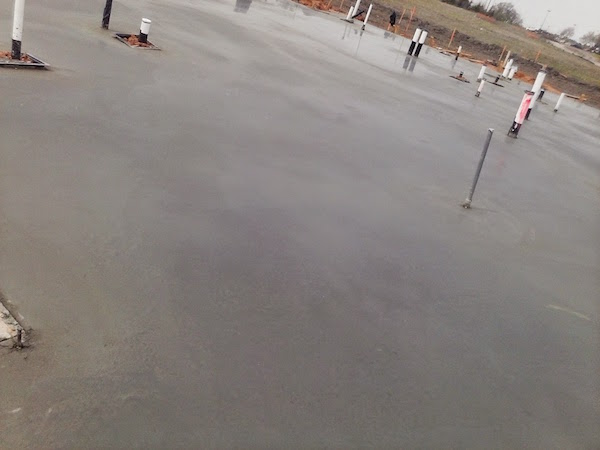
While concrete foundations are one of the very best kinds of foundations out there, its stability relies on proper site preparation. Soil and slope are the two biggest factors to ensure you get a solid, long-lasting foundation, but other climate conditions, weight bearing, and basements can also be important considerations for your concrete foundation.
Concrete Foundations and Property Slopes
Your contractor needs to know the existing slope of your yard so he can prepare the site and know how to build the foundation. The contractor will design your foundation so water drains away from your house, keeping the foundation dry. He may need to re-grade the site or add special drainage systems depending on the existing slope. For example, a flat grade tends to cause water to sit; a sloped grade tends to drain water better.
Consult our Foundation Cost Estimator for concrete foundation and installation prices.
Concrete Foundations and Soil Conditions
Drainage, the movement of water downward through the soil, is typically rapid in sandy soils and slow in clay. A given amount of water can penetrate about three times deeper in sand than in clay, so it’s apparent that soil type will affect the drainage system you place around your concrete foundation.
A soil engineer is the best person to determine your soil conditions. Soil engineers possess a thorough knowledge of soil-structure interaction. They investigate areas proposed for development, analyze site and subsurface conditions, and make recommendations for septic systems, grading, earth support, drainage, foundation design, concrete slab on grade construction, and site remediation.
Special Concrete Applications
There are many different kinds of concrete used in construction today. Each type blends a variety of materials to achieve unique characteristics. Structural concrete is used for building foundations and support beams. Insulating concrete is lightweight and can be used for finishes. Concrete can either be flat or shaped into three-dimensional objects. If you need steps, curbs, or other form work, please let your concrete contractor know ahead of time.
Concrete can also come in a wide variety of colors created by adding dyes to the liquid mixture. Fixing damage to colored concrete is tricky. Getting the right blend of colors is not an exact science. Don’t expect a repair person to create the perfect match. If a perfect match is critical, consider removing and replacing the area with new concrete.
Ready to start your concrete foundation?
Find ProsConcrete surfaces come in three different finishes:
- Smooth Concrete Finish: The most common interior finish is smooth, created by running a flat trowel over the top. This can be almost like glass.
- Textured Concrete Finish: Smooth surfaces don’t work well outside, however. A little water can turn a smooth concrete surface into a slip hazard. Textured concrete is created to wick away water and provide traction for your outdoor concrete installations.
- Exposed Aggregate Finish: Exposed aggregate is a rougher finish and less commonly used. Essentially, gravel is embedded into the surface, creating an ultra-textured concrete. A construction expert can tell you which kind of concrete is best for your building needs.
 Concrete Foundation Problems
Concrete Foundation Problems  Cracked Concrete
Cracked Concrete  How to Spot & Repair a Sinking Foundation
How to Spot & Repair a Sinking Foundation  Concrete Flooring – Solid as a Rock
Concrete Flooring – Solid as a Rock  How to Choose a Concrete Contractor
How to Choose a Concrete Contractor 

I would like to talk with someone about pouring a 14′ x 18′ textured concrete slab.